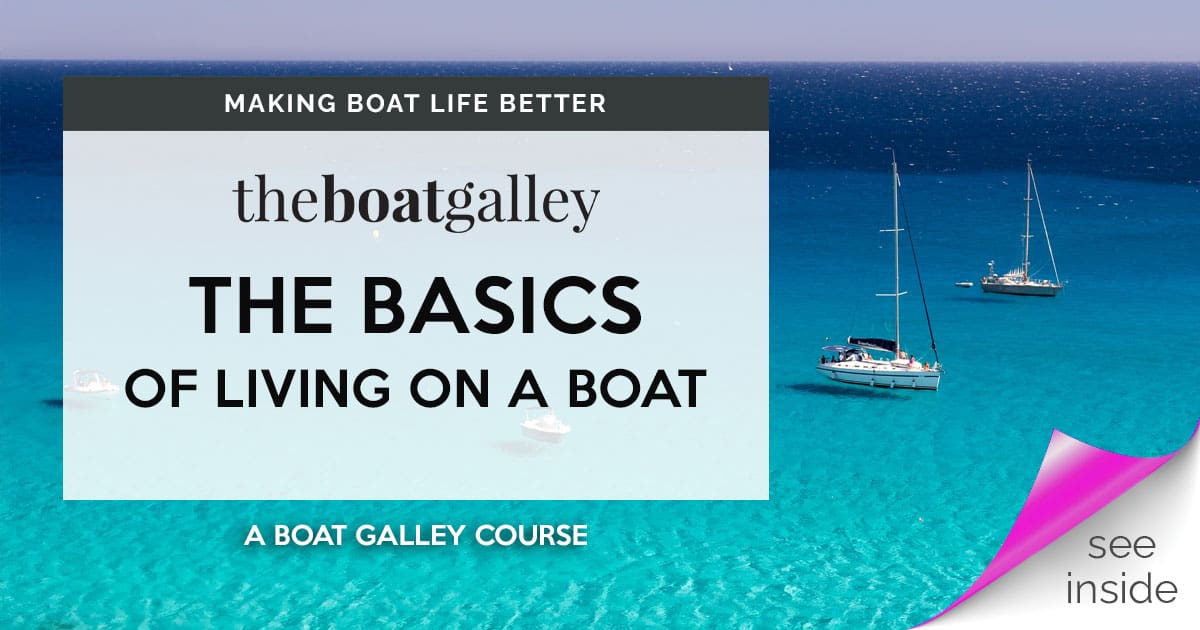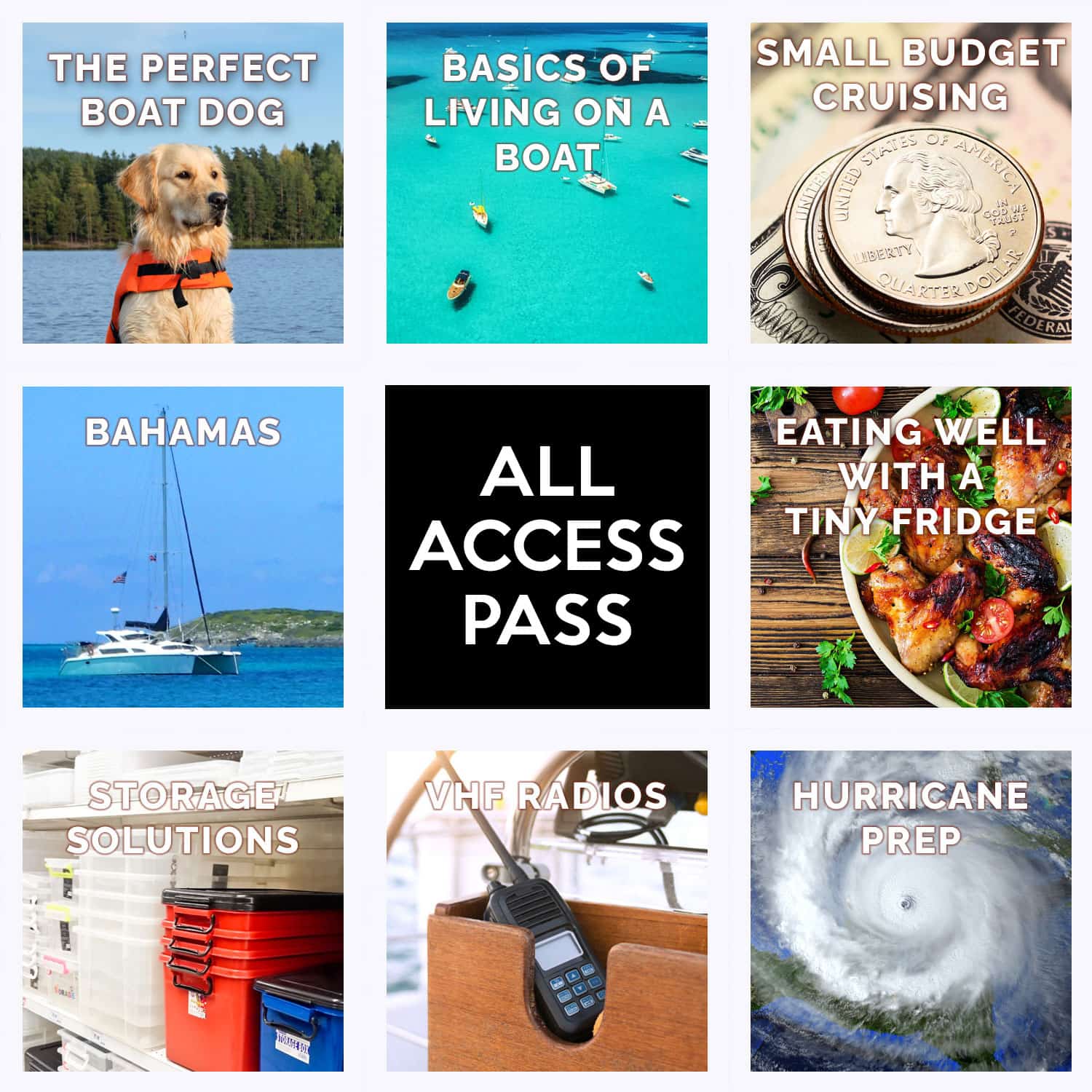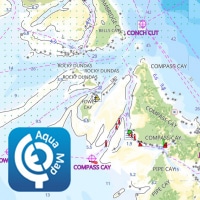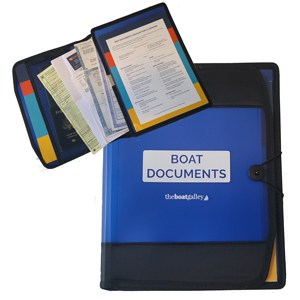Or maybe I should say, beware of blindly following what the “experts” say. Or maybe, don’t let the experts do your thinking for you. Or trust your own judgment.
They all apply. There’s a story behind this . . . and it involves those oven mitts.
When we first decided to head out cruising, I researched everything I could about what I needed for the galley. And I took the experts’ comments to heart. I dutifully wrote down everything I “had to have” and made up a shopping list.
I got some great and useful stuff.
I also got oven mitts. They were good oven mitts, the type recommended by the experts.
I’m sure they could have protected me from a couple of minor burns as I took stuff out of the oven. But they didn’t.
So, you’re asking, what can possibly go wrong with oven mitts?
Simple. I’ve never used oven mitts in my life. I pretty much hate wearing gloves. I don’t use rubber gloves, sailing gloves, or gardening gloves. I only reluctantly wear gloves in the winter when it’s just so cold that I HAVE to. I dislike wearing gloves almost as much as I dislike wearing shoes.
And thus I never used those nice oven mitts. I much prefer a regular potholder and that’s what I always reached for.
And that’s the point of this whole article — you have to temper any recommendations you get with what you know about what you like and how you operate. People — yeah, such as me — can tell you what’s worked well for them, but that’s all. There aren’t any universal answers.
If I had stopped to think for a minute, I would have realized that I was highly unlikely to use those oven mitts. I would have saved my money (okay, they weren’t expensive, but it all adds up) and the space.
The oven mitts aren’t the only thing that I ended up with because I failed to think for myself. There’s also the double sink that experts said was far superior to a single bowl . . . that I couldn’t put a plate in on either side (read more about replacing it). And probably a few other things that I’m forgetting.
Seeing what others have to say is good — I’ve learned tons this way over the years and many experts made me think about things I wouldn’t have otherwise. But I’ve learned not to just blindly follow suggestions without thinking if their reasons apply to me.
Bottom line: Don’t just blindly accept what I — or anyone else — says. Your galley (and everything else in your life) has to be right for you. I’m not an expert on what you need or how you should do things in your galley. Really. You are.
You might even consider oven mitts to be one of the best things you have in your galley!

Carolyn Shearlock has lived aboard full-time for 17 years, splitting her time between a Tayana 37 monohull and a Gemini 105 catamaran. She’s cruised over 14,000 miles, from Pacific Mexico and Central America to Florida and the Bahamas, gaining firsthand experience with the joys and challenges of life on the water.
Through The Boat Galley, Carolyn has helped thousands of people explore, prepare for, and enjoy life afloat. She shares her expertise as an instructor at Cruisers University, in leading boating publications, and through her bestselling book, The Boat Galley Cookbook. She is passionate about helping others embark on their liveaboard journey—making life on the water simpler, safer, and more enjoyable.
Here’s your “Quick Start” to everything you need to know when living on a boat:











laura dwan says
Thank you. I too hate shoes and gloves. So what shoes and gloves do YOU find that you do need and wear when cruising?
Carolyn Shearlock says
No gloves at all. Barefoot as much as possible (basically always on the boat) and a pair of Keen sandals. Keen’s are wonderful — they have several models that are designed for wading and hiking. You’ll see TONS of cruisers wearing them. I had one pair of sneakers and one pair of “better” shoes, and maybe wore each once or twice a year! We took our sailing boots but literally never wore them in six years.
But note on my shoe choice — we were in the tropics 100% of the time!
Leo Corsetti on Facebook says
I used a kitchen towel to take the beans out of the oven tonight…I wish I had your mits 🙂
The Boat Galley on Facebook says
I’d have been happy to give them to you! 😉
Nicola Kamper says
I bought 3 silicone pads to use on the boat. *Love* them! They are hot pads, trivets, and non-skid, all in one! They have a honeycomb design and I have 3 festive colors. They serve multiple purposes and can even be used for padding between other dishes! I also hate wearing “stuff”….shoes, hats, gloves, glasses…
Peggy D. says
That’s too funny, I have flat potholders onboard & hate them with a passion — paranoid about them slipping & getting burned, give me my nice shoreside oven mitts that stay on my hands like they’re supposed to! I suspect I’ll be sewing some non-cotton, non-mildew-prone oven mitts for the galley this winter.
All goes to show, you have to temper everyone else’s wisdom with your own sense of what works for you.
Carolyn Shearlock says
Absolutely! Too funny and really the whole point I wanted to make — we all know what we like and what we don’t, and we have problems when we forget that!
Colin Mombourquette says
Of course, “expert” is defined as, “X = has-been and
Colin Mombourquette says
“Spurt” = a little drip under pressure 😉
JB Writes says
There’s a huge difference between an expert and a Guru! The Boat Galley has been my Galley Guru without fail for years!
The Boat Galley says
Thanks!
Anne Ellingsen says
Well said
Peggy at ECY says
I found these silicone out holders shaped like a thin, short hot dog and I love them. Then can be flattened to use as a trivet, but are perfect for getting things out of galley oven. Got them at Walmart… They are supposed to be used to wrap around the handle of an iron skillet! They have nubs on one side and ridges on other and fold easily… A hole in end to hang
Florian says
It just comes down to common sense – whatever I am being told by whomever obliges me to listen and think about it, but not necessarily to blindly copy it.
A few examples: we have a very old wooden gaff ketch from 1923 and sail this in the Australian tropics; the galley has a sensible layout, but: we have a coal stove with oven (and copper pots & pans, the whole monty). While firing it up and cooking on it is a bit more time-consuming and sometimes impractical the dry heat is invaluable in keeping the humidity at bay, and we just love the look & smell every time we cook. As we’re trying to keep the risk of a fire at bay cooking is only done when at anchor; under way it’s several good old thermos that provides us with hot water and warm food (THAT was a great tip from The Boat Galley).
Crockery & glass ware: we tried several brands of the clear polycarbonate ‘glasses’ (incl. Govino) and very quickly ditched them – terrible feel, and empty glasses are being blown all across the deck. Now we have cheap, but good looking glasses made of glass – end of story. For dishes we tried melamine (felt like camping in the 50ies…), Corelle (ok, but too light), and ended up with Blue Arden ceramics from the UK – nice feel, looks great and is pretty sturdy. Replacements can be easily & cheaply purchased on Ebay, and I managed to get a cheap lot of dishes, plates, mugs, bowls etc. on Gumtree (a very lovely lady originally from the UK sold her dinner service – we took it in a flash).
We also love the whole debate about a single or double sink, but cannot really complain, as we have a standard household double sink plus dripping / drying tray built into the boat. Works fine, as the basins are standard size, but if under constraints one basin would do the job as well (I’d never go for two ‘miniature basins’ as you can find on many modern yachts, but I also wouldn’t want to miss the drying area).
Lighting is another area that makes me smile – we do have ‘on shore’ electric lighting PLUS tons of kerosene lights, which are cheap to have, look very decorative & romantic, and if used with citronella kerosene keep the mozzies at bay (in an old boat no mozzie screen fits perfectly, and these bastards always find a gap to get inside).
Back to the galley – we do not have oven mits (although I find them practical), but with the woodstove they would have to be fire-retardant, and then they get very stiff and impractical. We just use cheap kitchen towels – works fine.
So all in all it come down to what YOU want and like, independent of what others tell you (I also crewed on racing boats, and we had one plate and one enamel mug per sailor; practical, but not very classy…). We put a lot of ‘forward thinking’ into what we do and have on our ship, and guaranteed it doesn’t all work out fine. Discard, change, modify and trial new things and you will in the end have a boat that is entirely, but 100 % right for you. It’s not always cheap, but whoever had the idea that owning a boat is cheap can please tell me how he / she got to THAT conclusion :-).
Happy sailing !
Linda Spell says
Florian – just a question. How long have you been sailing or cruising? You sound like we could learn a great deal from your experiences.
Florian Wolf says
Well, I started in small boats at the age of about 16 and then worked my way up as crew and single-handed sailor & wooden boat restorer until we finally owned our own ‘maritime abode’. I sailed the Baltic & North Seas, the Med, US eastcoast up to Maine, and now the Australian east coast & the Great Barrier Reef. However, I don’t consider myself an expert, neither in sailing nor in wooden boat restoration & refurbishment, but I think I know a thing or two. Every boat and crew is different, so the best I can probably do is reveal how we do or would do things on our ship (a 21 metre long wooden gaff ketch from 1923; 10 years restored from the ground up by the previous owners; after they had put in the hard yard – and got very frustrated & disillusioned over it) we’re now in the process of ‘icing the cake’, i.e. doing all the fine-tuning and finishing touches.
We learned tons along the way, be it about rope rigging, traditional navigation techniques, b.f. old diesel engines that just take a break when you need them the most :-(((, several blocked or shortcut electrical dunnies that I have all thrown out in anger and replaced with a beautiful old manual bronze, mahogany & porcelain potty from 1924, period materials and their benefits & downsides (eg don’t ever think of the good ole cotton sails, we tried it with the rigging of the skiff and it is at least “inconvenient”) etc. I have to admit that I am personally a fan of old, simple, proven-to-work equipment that ideally does not require any power or fuel & looks good, but my wife thinks a bit different in this department – she probably still hasn’t forgiven me in relation to throwing the electrical thrones out….
The biggest learning for me and for us is that one should design his / her boat to your own taste and preferrences, but with several layers of redundancy, so that when the ‘posher’, more convenient, modern equipment fails – which it will, believe me – you still have something to rely on. Despite being old, outdated and ‘romantic’ kerosene lighting, a wood stove for heating the salon and a rusty Origo alcohol stove for cooking (although I personally prefer to cook on the thundering wood stove) saved our butts & kept us warm and well fed many times. Despite having GPS, EPIRB and whatever modern navigational stuff on board we still have charts, a compass, a parallel ruler, a protractor etc. for hands-on powerless navigation. Our electric nav lights are backed up by a set of kerosene ones, and despite wearing life vests and having an offshore life raft to save us we also still have the old-fashioned life rings with flashlights on board – you never know. We have the flags, a mechanical fog horn, a brass loud hailer etc., and in the galley we are pretty conservative as well with two fridge / freezers (240 V / 12 V / LPG), an “ice box” (literally), a 4 burner LPG stove (although I still prefer to cook on the wood stove, but here in the tropics you only use it after the rainy season to get the ship dry again, and in winter). I am currently replacing our Corelle crockery with the US Navy fouled anchor crockery, but I have to ‘sadly consent’ that we use just ordinary stainless steel cutlery and don’t carve our spoons at sea ourselves. Corelle crockery is very popular with caravans down under & was great for us too for some time, but it seems to age quickly under our harsh conditions here: we cracked a few items, and they literally exploded all over the galley, so we decided to get out of it. Kettle, pots & pan-wise we’re using copper pots that have been freshly tinned on the inside – looks good and it absolutely great for cooking with gas or wood (and the re-tinning is fun to do in your back yard). You need to equip your boat the way you like, and feel comfortable & safe with; over-engineering the safety aspect can’t hurt, as normally when you’re deep in the muck you have to fend for yourself for some time until help arrives.
While this may sound a bit manic, over-engineered and / or old-fashioned it helps us in many ways to keep the historic appearance of our ship and at the same time have modern equipment available; I tend to hide this as much as possible to retain appearance, but eg with the life raft we couldn’t do more but conceal its canister in the same cloth that we used to cover the life boat / dinghy with (14 ft. timber skiff with a never-failing Seagull, a compass, another EPIRB & two pairs or oars 🙂 & to locate it on a timber platform.
In summary we learned to play it very safe, as out on the water the forces of wind & sea can be gruesome, esp. at night. I still remember sailing from Bornholm to Kopenhagen over night on “Germania VI”, a 26 metre racing yawl in force 10+ winds, with high seas we could only see at the last moment, everyone wore life vests and was roped to the ship, it was like being in a pitch-black washing machine and several of us literally peed their pants as we could not go down below at all. No food as the galley was closed, dog-tired, drenched to the bone & bitterly cold. That trip taught me a lot about safety at sea, esp. as we left Bornholm in calm seas and a beautiful sunset, and a bunch of half-drowned rats arrived in Kopenhagen during calm seas again in a beautiful sunrise – but in between it was living hell, not forecasted or anticipated, but we made it due to excellent preparation, lots of safety features on our yawl, and a bosun who was pretty a…l about safety at sea & had terrorized all of us with this the weeks before (apparently for good).
This is not to shy anyone away from any adventure you intend to have, but only to as a reminder that several levels of redundancy in your equipment, excellent preparation and repeated safety drills are key to survival and loads of enjoyment on the water. Learning ‘on the go’ does work, but can be dangerous, so be prepared and aware of what you might get into.
Otherwise my other big learning is that you cannot enjoy the sea if you don’t follow her calling, so go out and have fun with your boat, whatever size, model, material, build it is (we have three: the big ketch, the 14 ft skiff which can be rigged for dinghy sailing as well, and a 1952 mahogany ski boat for the moments where we are a bit ‘petrol-heady’ – oh, and my sweetie has a plastic-fantastic kayak for watching the whales, dugongs & turtles around our island in the Great Barrier Reef).
The third big learning is related to the age of the internet: when fitting out your boat don’t compromise on quality or design – whatever you need & want is out there, you just need to find it. Be it charts, safety equipment, galley stuff, engine parts, whatever – be a truffle hog and hunt it down, as only then your ship will become YOUR ship. Personally I normally search via the “image” tab in Google, but Ebay, Craig’s List, Gumtree etc. are all great places to use. Once you find someone who has something close to what you want start asking questions for what you really want – and then barter in such a way that the final deal benefits both sides. By respecting the interests of the vendor, as well as my own, I have developed many interesting connections & relations to folks who have tons of interesting stuff to offer, and most of that hidden away in their warehouse or under the desk. With a classic boat this is vital, with an off-the-production-line boat probably not so much, but once you start to go your own individual way it becomes essential again.
Enough ramblings for the time being, now you can throw the marlin spike at me…
Cheers, Florian
Don says
That’s what the marina swap meets are for. Someone’s “good idea” that has gone unused.
If I had listened to the “expert/surveyor”, I would have had a real mess on my hands. It didn’t take long for my knowledge to surpass his on the “critical point” he advised me about.